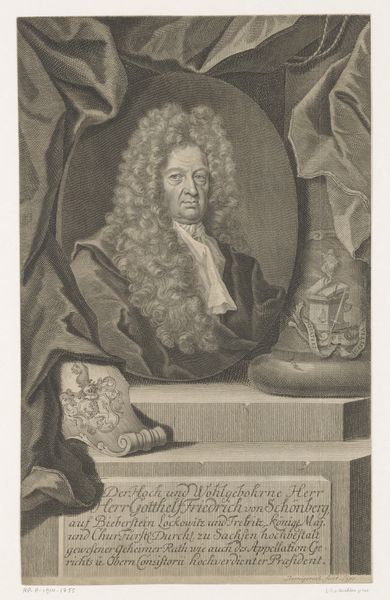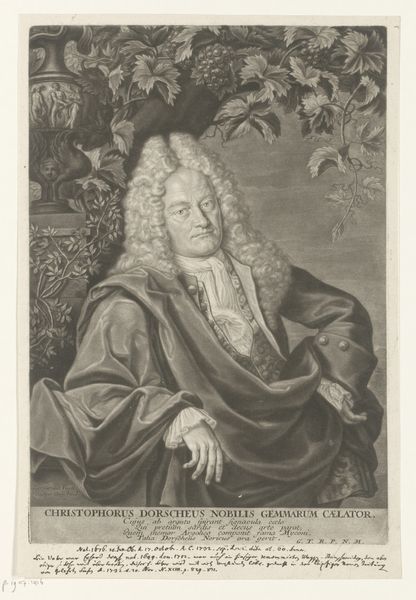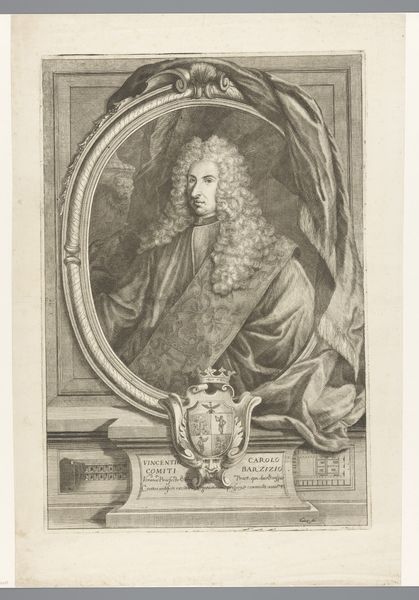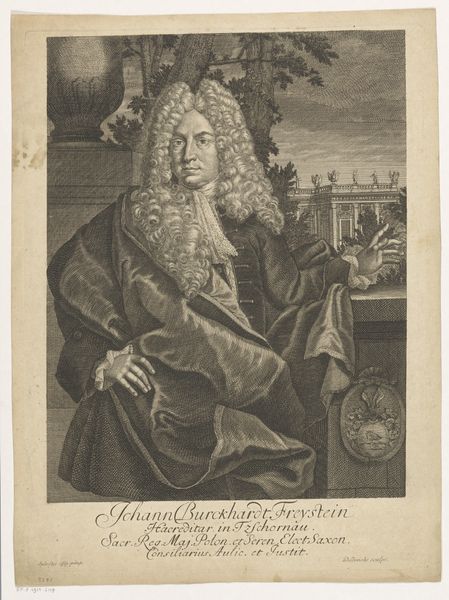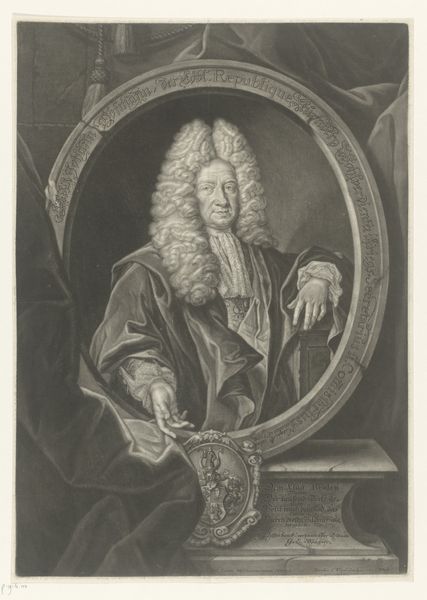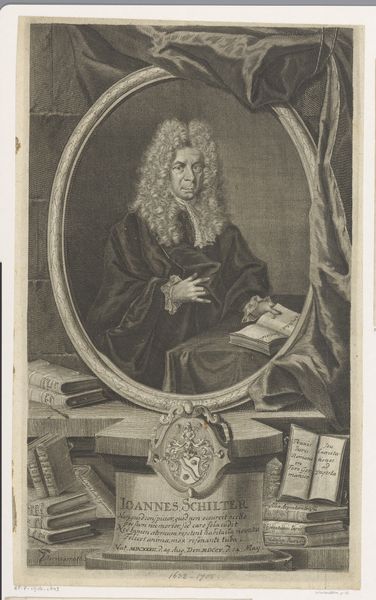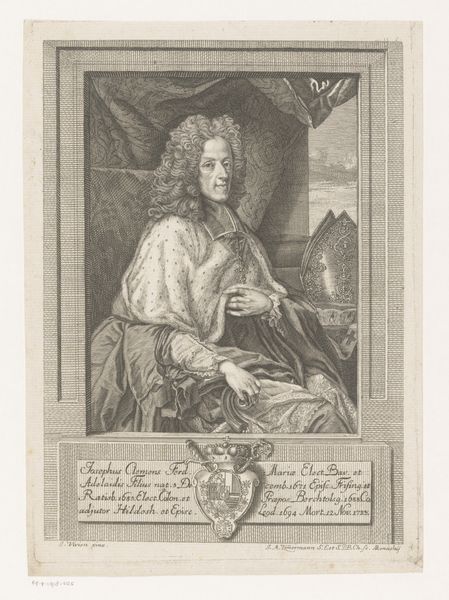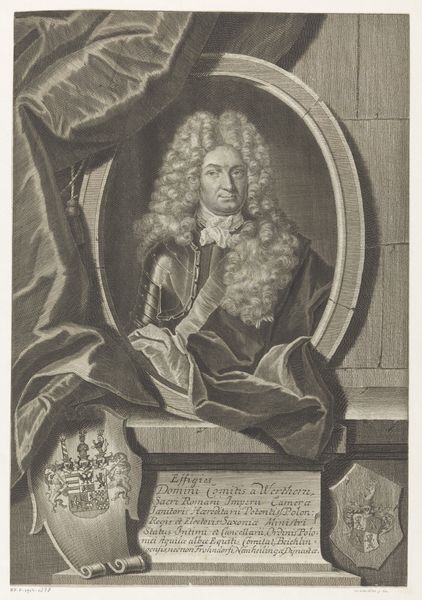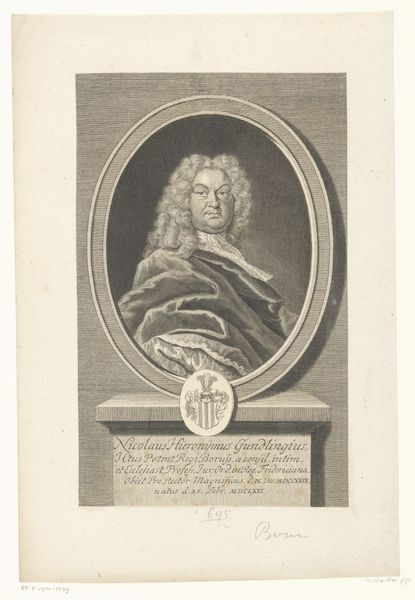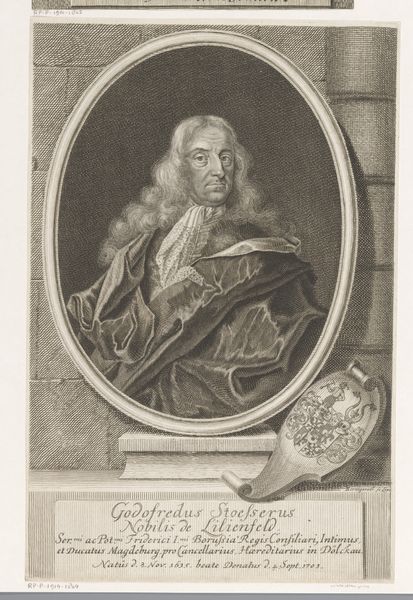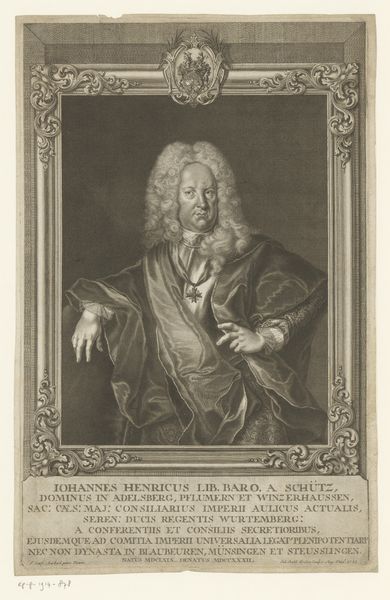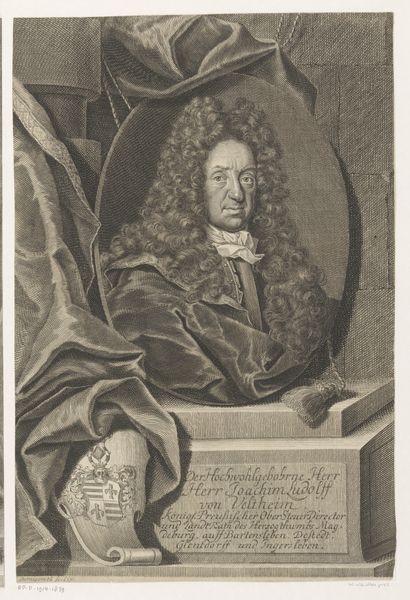
print, engraving
#
portrait
#
baroque
# print
#
old engraving style
#
engraving
Dimensions: height 469 mm, width 324 mm
Copyright: Rijks Museum: Open Domain
Curator: Here we have "Portret van Caspar Christian Seligmann," a work dating between 1680 and 1733 by Martin Bernigeroth. It's an engraving currently held at the Rijksmuseum. My immediate impression is the striking texture, almost palpable in its imitation of velvet and lace. The monochrome amplifies this concentration on surface. Editor: It’s fascinating to see how portraits such as this reinforced existing power dynamics of the time. The almost theatrical presentation speaks volumes about identity as a constructed performance, carefully managed. How does Seligmann’s status intersect with prevailing class structures and the role of portraiture in upholding these hierarchies? Curator: Undoubtedly, class is paramount here. Observe the deliberate arrangement of the composition: the subject’s robes, the meticulously rendered lace, even the studied pose – each element communicates affluence. Semiotically, it reads as an overt assertion of dominance. Editor: Beyond status, the historical context hints at larger narratives. Seligmann held court positions for both Polish and Saxon rulers. He served as "Consiliarius intimus" – essentially, a close confidant. This image serves to ask whether the sitter's influence in the royal courts impacted decisions, legislation, or the larger sociopolitical environment of his time. Who benefited from his advice, and whose voices were silenced in this period of upheaval? Curator: Such an interpretation casts the artwork in a fascinating light. The background, with that distant cityscape, serves a clear structural purpose; it’s carefully framed by the draping curtain. The crest or emblem is likewise deliberate. These aspects combine into a cohesive whole that pleases aesthetically but may not suggest social change. Editor: Perhaps, but in examining these portraits, we have an opportunity to challenge a singular narrative, to question traditional norms, and make way for a wider scope of stories to emerge. This one allows us to reflect on privilege, power, and representation. Curator: An incisive consideration! For me, the engraving exemplifies how effective texture and the distribution of light can dictate mood. Editor: For me, the work asks important questions. These considerations encourage a far more democratic encounter with artworks that once reinforced an unequal past.
Comments
No comments
Be the first to comment and join the conversation on the ultimate creative platform.
